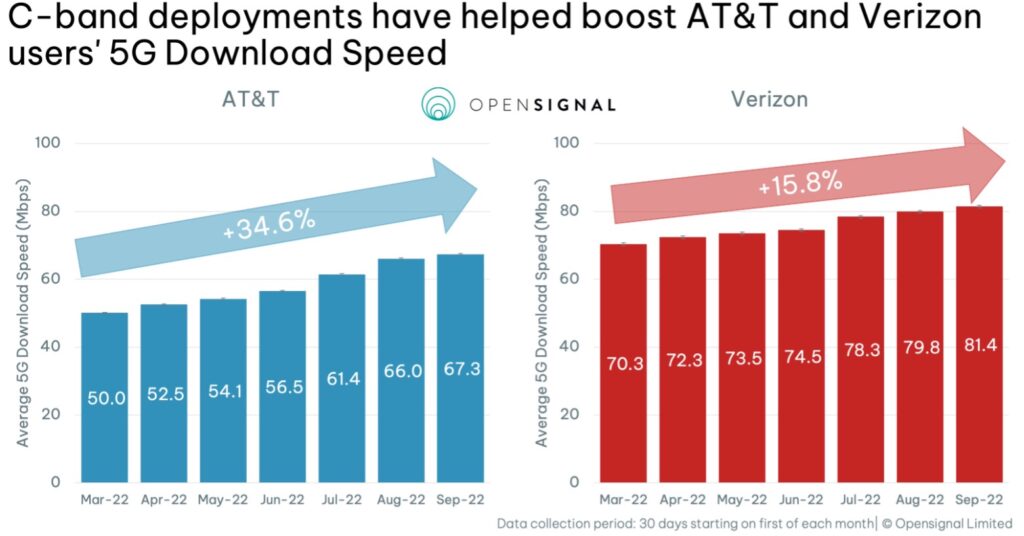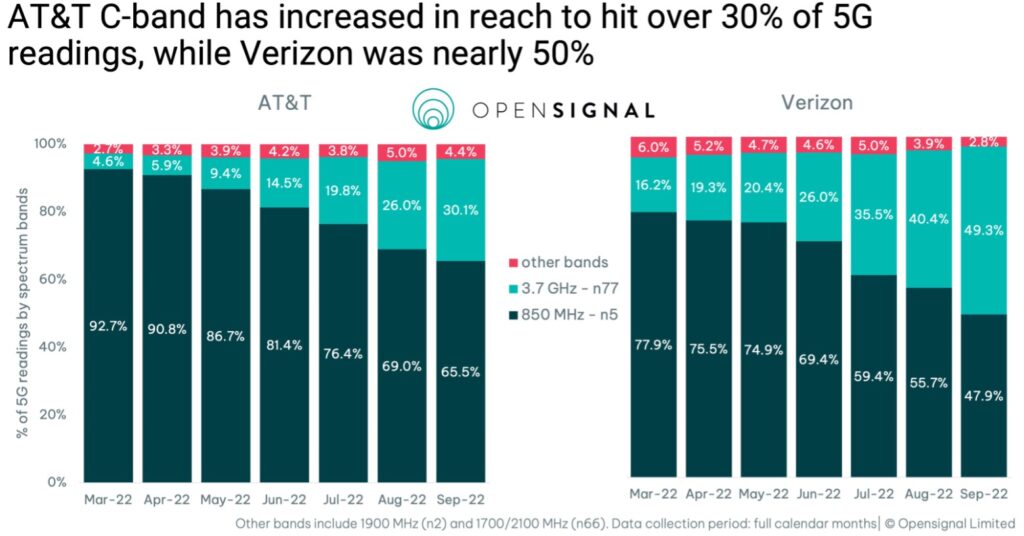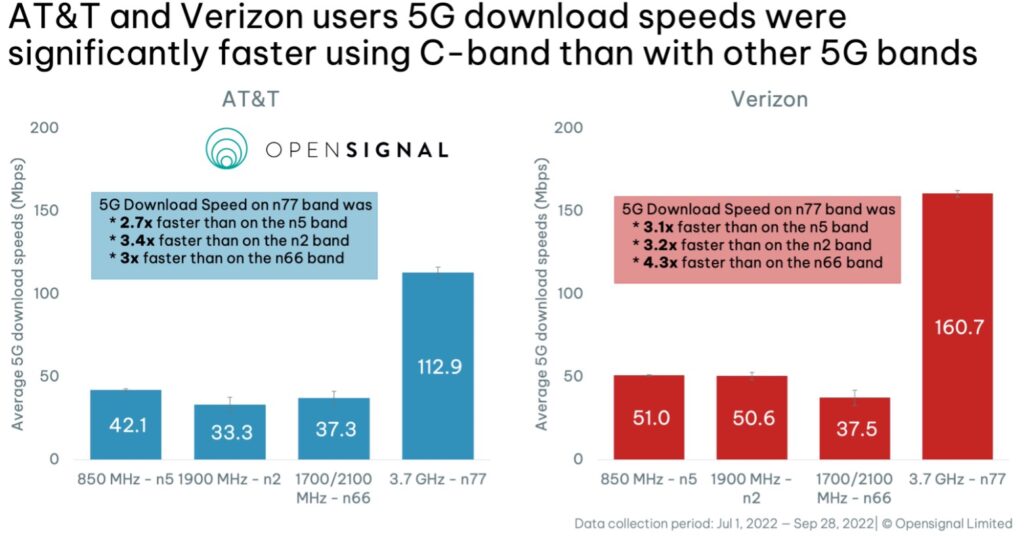C-band has significantly greater capacity than lower frequency 5G bands
According to a new Opensignal report, recent C-band deployments by AT&T and Verizon are helping the pair catch up to T-Mobile US, which has, on several occasions, emerged as the 5G frontrunner when it comes to speed, availability and reach.
The latest report, however, shows that 5G download speeds on both AT&T and Verizon networks have increased, which Opensignal said is the direct result of C-band deployment, because more users on both carriers’ networks are spending time on that band. Specifically, download speeds on AT&T’s network have increased by 34.6%, and the share of its customers using C-band has increased from 4.6% to over 30%. Verizon users’ experienced an average 5G download speed increase of 15.8%, with the share of C-band readings growing from 16.2% to nearly 50%.

“Previously Opensignal analyzed the initial impact of 5G deployments in the C-band at a time when Verizon was deploying C-band services but AT&T’s early roll-outs were limited to eight metro areas around the U.S. at first as AT&T planned a surge in Q2 when it would also deploy service on the 3.45 GHz band at the same time,” wrote Robert Wyrzykowski, senior industry analyst at Opensignal. “Our AT&T users’ average 5G download speeds have steadily increased since the beginning of the year when the operator started to roll out 5G services in the C-band.”
In March, AT&T was relying heavily on the 850 MHz (n5) band to deliver 5G services, and so it’s no surprise that Opensignal reported that it made up 92.7% of its 5G readings on the network with use of the 3.7 GHz band being incredibly limited. However, in April, use of AT&T’s total sub 6GHz 5G readings rose to 5.9%, and then accelerated to nearly 10% in May and almost 20% just two months later in July.
“This trend continued in September when more than 30% of 5G readings observed on AT&T’s network were on the 3.7 GHz band — while the share of the 850 MHz dropped to 65.5% of 5G readings,” continued Wyrzykowski.
AT&T said in January that it expects to have 200 million potential customers covered by its midband spectrum holdings by the end of next year.

Verizon’s results showed a similar trend, with an increase in the average 5G download speeds of its users between March and September 2022 of 11.1 Mbps (15.8%), which Opensignal concluded was also driven by the C-band deployments across the U.S.
“C-band explains the jump in users’ overall 5G Download Speed on both carriers because of its significantly greater capacity than lower frequency 5G bands. Analyzing the different average 5G download speeds when different 5G bands are connected highlights the superior experience of using the C-band,” Wyrzykowski summarized.
In fact, AT&T users experienced an average 5G download speed of nearly 113 Mbps on the 3.7 GHz band, which is approximately three times faster than the speeds users saw with other AT&T 5G band, while Verizon users saw 5G download speeds averaging at 160.7 Mbps, 3.1-3.2 times faster than on the 850 and 1900 MHz legacy bands and 4.3 times faster than on the AWS (1700/2100 MHz) band.

Despite the improvements brought on by C-band deployments, AT&T still lags behind Verizon, and Verizon still lags behind T-Mobile US. “[U]sers on T-Mobile’s network have experienced faster speeds than those on AT&T or Verizon’s networks,” Wyrzykowski said. Like AT&T, Verizon also started its C-band 5G deployments in January 2022 — months behind T-Mobile’s 2.5 GHz rollout — and while C-band now represents nearly 46% of the total sub-6 GHz 5G readings seen, T-Mobile saw a much higher share for its 2.5 GHz with over 70% of T-Mobile 5G readings powered using mid-band spectrum.”

